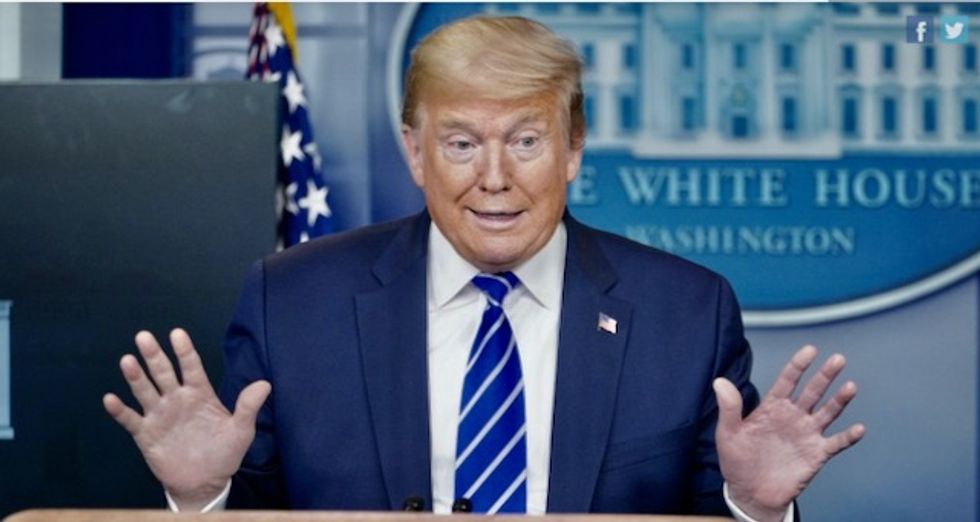
A study from Harvard concerning the origins of the COVID-19 virus, that has yet to be peer-reviewed, received a big boost from Donald Trump last week at the same time that experts in the field of satellite imagery are casting a skeptical eye at the report's conclusions, reports the Daily Beast.
According to the Beast's Adam Rawnsley, the study was touted by Fox News and then received greater exposure after the president tweeted out a clip from the conservative news network -- but experts have been quick to push back.
Trump, it should be noted, has attempted to lay the majority of the blame for the pandemic that has killed over 110,000 Americans on China for hiding it, despite some evidence that it came into the U.S. via travelers coming into the country from Europe.
The Harvard report makes the case that the coronavirus outbreak started months before China alerted the world by using web searches and satellite imagery of hospital parking lots in Wuhan, China which the Harvard analysts say shows increased activity.
However outside analysts are skeptical of the conclusion because the images "obscure uncounted vehicles" and much earlier dates also show full parking lots.
According to Jeffrey Lewis, director of the East Asia Nonproliferation Program at the Center for Nonproliferation Studies, key contrary information is notably missing.
“There are other high resolution images showing ‘surge’ days earlier in the year that are not included in their dataset. They just missed the contrary data,” Lewis explained while noting that a satellite image which showed a nearly full parking lot at Hubei Women and Children’s hospital on May 31, 2019, well before reports of the virus started circulating.
"The study, still a preprint awaiting peer review, was authored by a team of researchers led by Dr. John Brownstein of Harvard Medical School. The team worked with the satellite imagery analysis firm RS Metrics to count cars in five major hospital parking lots in Wuhan and combine it with search query data about influenza-like symptoms from the Chinese search engine Baidu. The results appear to show a spike in traffic to hospitals in Wuhan in October and November, months before China officially notified the World Health Organization of an outbreak in the city," the Beast reports.
Rawnsley adds, "The Harvard study’s conclusions suggest the possibility that the virus may have been circulating as early as August 2019, suggesting Chinese officials could have known more about a potential problem and earlier than is commonly understood."
According to the Beast, when the Harvard team shared their conclusions with ABC news, experts immediately noticed discrepancies.
“An initial review of the imagery to determine if the areas were captured correctly should have been undertaken to understand ‘what’ and ‘when’ comparisons can be made. To make that determination an analyst would simply orient the image toward the satellite sensor to review. It’s by far one of the most rudimentary steps to doing imagery analysis,” Chris Biggers, a former satellite imagery analyst for the National Geospatial Intelligence Agency, wrote in response.
According to RS Metrics’ Tom Diamond, "Yes, there may be some error here in a few of the images of Hubei Women and Children’s because it has such a tall building, but no more than maybe 20 or 30 cars. If we take those images out, we still see the same trend with the remaining images. If we were to entirely remove Hubei Women from the study, the results are still the same for the other hospitals.”
Biggers said he still has many questions about how the Harvard team reached their conclusions.
“If the comparisons published are examples of the methodology employed to get at the counts, I would have serious reservations about the count accuracy,” he explained.
You can read more here.




